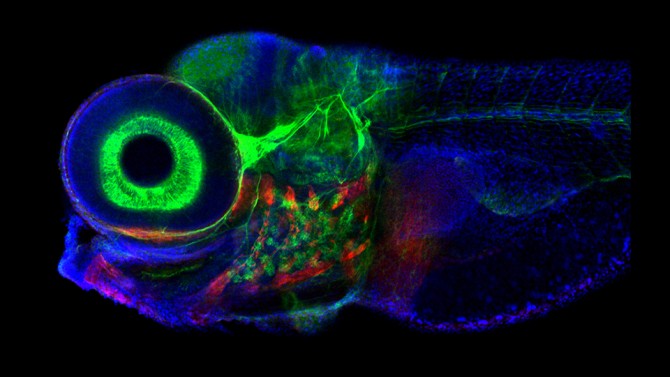(Image: NASA, ESA, H.Teplitz and M.Rafelski (IPAC/Caltech), A. Koekemoer (STScI), R. Windhorst (ASU), Z. Levay (STScI))
Astronomers observe that the universe is expanding at an accelerating rate, but what causes this acceleration is unknown. A form of energy known as dark energy is the most popular explanation, and is keeping scientists the world over occupied searching for it. Now, a team of researchers working with the KWISP detector at CERN has presented the of their search for hypothetical “chameleon” particles from the Sun that could make up dark energy.
Like their reptilian namesakes, chameleon particles would change depending on their surroundings. In regions of high density, such as on Earth, their mass would be large, and as a result their force would act over short distances. By contrast, in regions of low density, such as in empty space, their mass would be extremely small and their force would be long-ranged. This changing behaviour makes chameleon particles good candidate particles for dark energy, but it also makes them difficult to search for on Earth.
Enter KWISP, a unique detector recently installed at the to sense the force exerted on a thin membrane by a stream of chameleon particles from the Sun. On hitting the membrane, such a hypothetical stream would move it from its normal rest position by less than a proton’s radius – about a quadrillionth of a metre. This tiny displacement would be revealed by light from a laser beam that travels through a special optical configuration that includes the membrane.
The new results from KWISP were obtained with data taken at CAST in July 2017 for about 90 minutes, during which the experiment tracked the Sun. The data were part of a 10-day data-taking campaign to test KWISP. To increase the chances of finding solar chameleons, the team added two elements to the KWISP detector before taking the data: a mirror system to focus the incoming stream of solar chameleons, and a so-called mechanical chopper, placed between the mirror system and the detector, to modulate the force exerted by the stream in a way that maximises the detector’s sensitivity to the particles.
The researchers observed no signal of solar chameleons, but the data allowed them to derive an upper limit on the force exerted on the membrane by the particles of 44 ± 18 piconewtons – about the weight of a single human cell.
Together with theoretical calculations of the number of solar chameleons expected to reach the detector, this upper limit allowed bounds to be placed on the strength of the interactions of solar chameleons with matter and light. These bounds are complementary to those obtained from other experiments, such as the , which looks for X-ray photons from solar chameleons.








